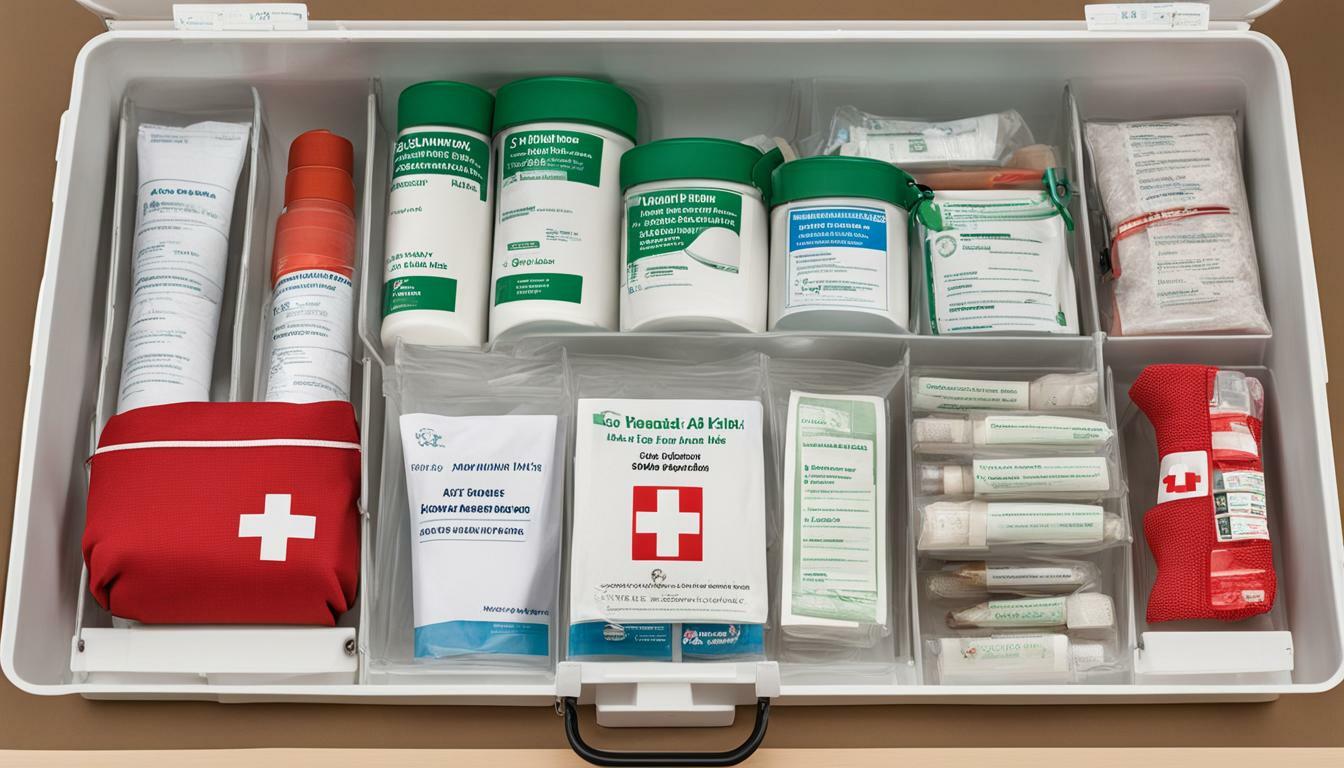Storing your first aid kit safely is crucial for emergency preparedness. It ensures that you have all the necessary medical supplies readily available in case of an urgent situation. However, organizing and maintaining your first aid kit can be overwhelming if you don’t know where to start. That’s why we’ve put together this essential guide to help you store your first aid kit safely and effectively.
In this section, we will provide valuable tips on how to organize and maintain your first aid kit. We will discuss the importance of proper storage and provide guidelines on how to store your first aid supplies to ensure their accessibility, usability, and longevity.
Key Takeaways
- Storing your first aid kit safely is critical for emergency preparedness.
- Proper storage extends the shelf life of your first aid supplies and ensures their accessibility and usability.
- Choosing an appropriate container and location for your first aid kit is crucial for quick and convenient access during emergencies.
Why Proper Storage of First Aid Supplies is Crucial
Proper storage of first aid supplies is essential for their effectiveness during emergencies. Maintaining the integrity of the supplies not only extends their shelf life but also guarantees their accessibility and usability when needed the most.
First aid kit organization is critical to ensuring that the supplies are stored correctly and ready for use. Proper storage of first aid supplies encompasses several aspects such as inventory management, expiry date management, and storage location.
First aid kit maintenance involves keeping the supplies organized, up to date, and in good condition. Regularly checking the condition of your first aid kit ensures that it is prepared for emergencies.

Storing your first aid kit in a well-organized and secure location is important to make sure that it can be easily accessed during emergencies. Additionally, storing the kit in a location away from direct sunlight, moisture, and high temperatures can help extend the shelf life of its contents.
The proper storage of first aid supplies can also help you avoid health risks associated with expired or damaged items. Expired or damaged supplies can be harmful and may not be effective in treating injuries or illnesses.
To ensure that your first aid supplies are always ready for use, it is important to conduct regular audits and reevaluations of the kit contents. This will help you identify items that need to be replaced or restocked and ensure that your kit remains current.
By following proper first aid kit organization, storage, and maintenance guidelines, you can ensure that your kit is prepared for any emergency and that you are ready to take action when needed.
Choosing the Right Container for Your First Aid Kit
When it comes to storing your first aid supplies, choosing the right container is crucial. The container you select should not only keep your supplies organized but also protect them from environmental and physical damage. Here are some tips to help you choose the best way to store first aid supplies:
| Type of Container | Pros | Cons |
|---|---|---|
| Plastic Tackle Boxes | Easy to find and affordable. Comes in different sizes. Has removable dividers for customization. | May not offer complete protection from moisture or heat. May not be portable. |
| Soft-Sided Bags | Portable and easy to transport. Many have multiple compartments for organization. | May not offer enough protection from bumps or drops. Material may not be durable. |
| Hard-Sided Cases | Durable and offers complete protection from environmental factors and physical damage. Many are designed for portability. | May be expensive. Does not allow for customization. |
Consider the size of your first aid kit and the specific needs of your household or workplace when selecting a container. Make sure it is large enough to hold all your supplies and has additional space for future additions. Label your container clearly and keep it in an easily accessible location.
By selecting the right container for your first aid kit, you can ensure the integrity of your supplies and protect them from damage. This is the best way to store first aid supplies and be ready for any emergency.
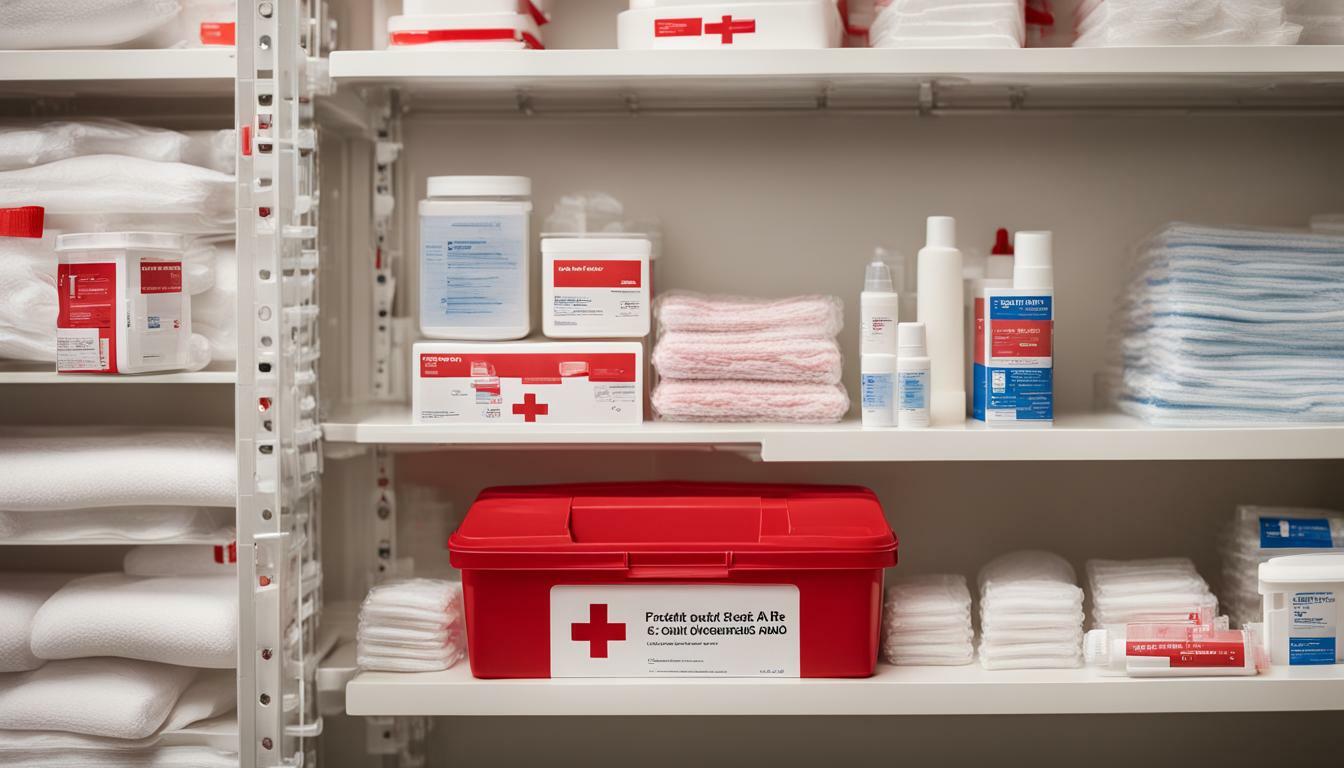
Location, Location, Location
Organising your first aid kit is as important as storing it properly. Finding the right location to store your first aid kit is crucial to ensure its accessibility during emergencies. You should keep your first aid kit in a cool, dry place and away from direct sunlight. Avoid storing it in areas that are damp, humid or prone to temperature fluctuations, such as the bathroom or kitchen.
You should also consider the proximity of the first aid kit to potential hazards or areas that are prone to accidents, such as the kitchen, workshop or pool. Keep your first aid kit in a location that is easily accessible to everyone, including children, but out of reach from pets and unauthorized individuals.
It is also important to ensure that the first aid kit is properly labeled and visible at all times. You can use a bright-colored label or a sign to indicate the location of the kit. Ensure that the label or sign is placed at eye level and easily identifiable from a distance.
Remember, organizing and maintaining your first aid kit is critical to its effectiveness during emergencies. By following these first aid kit storage tips, you can ensure that your first aid supplies are easily accessible and ready for use when needed.
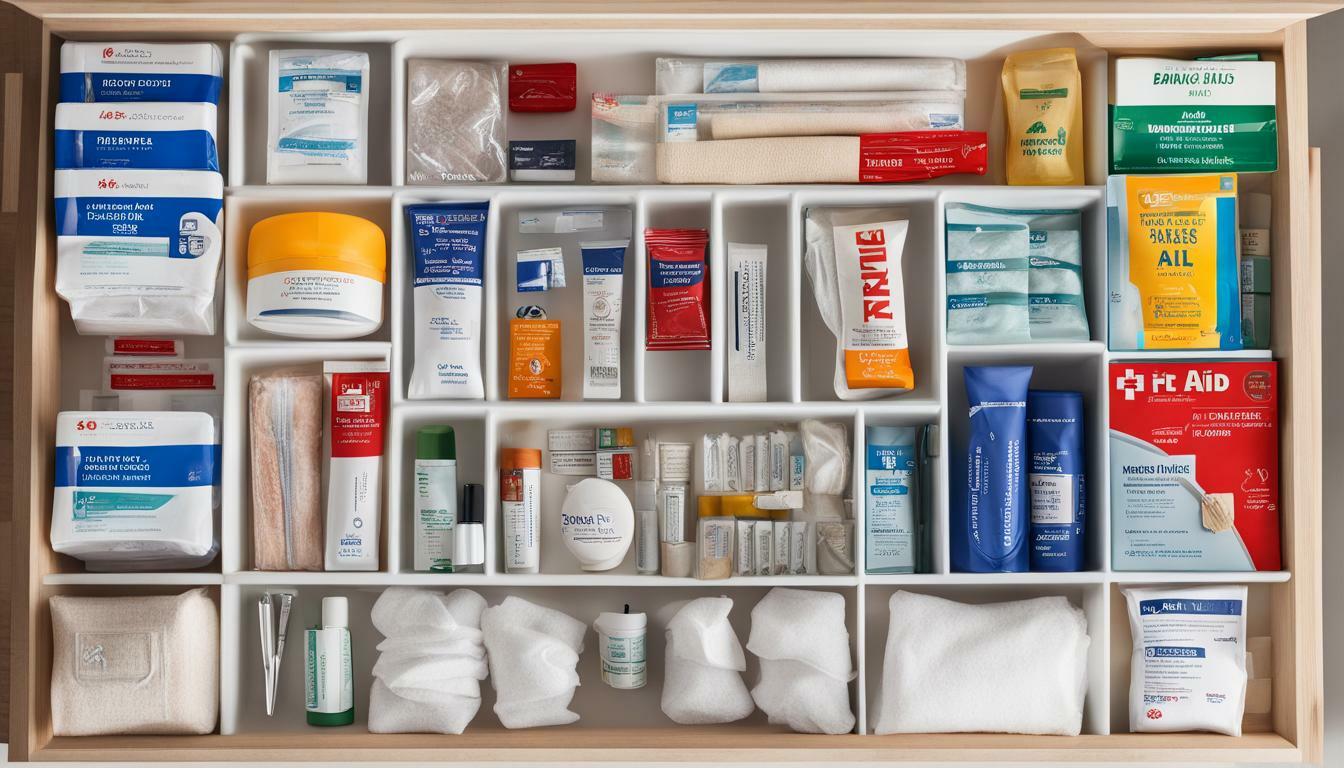
First Aid Kit Essentials
Storing medical supplies can be a tricky task, especially when it comes to organizing a first aid kit. It’s essential to have all the necessary items stored in a single location, ensuring that they remain easily accessible in times of need.
Here is a comprehensive list of medical supplies that should be included in your first aid kit:
| Item | Quantity | Storage |
|---|---|---|
| Bandages (assorted sizes) | At least 10 | Store in a dry and cool location |
| Adhesive tape | 1 roll | Keep in a dry and cool location |
| Gauze pads | At least 5 | Keep in a dry and cool location |
| Antiseptic wipes or spray | At least 10 | Store in a separate compartment with an airtight seal |
| Tweezers | 1 pair | Keep in a dry location |
| Scissors | 1 pair | Keep in a dry location |
| Thermometer | 1 | Store in a cool and dry place |
| Pain relievers (e.g. paracetamol, aspirin, ibuprofen) | At least 10 tablets | Store in a cool and dry place |
| Emergency blanket | 1 | Keep in a dry and cool location |
It’s important to note that the items listed above are the bare essentials and can be added to based on your specific needs. However, it’s crucial to ensure that they are always stored in a dry, cool, and accessible location.
Additionally, it’s recommended to have a small first aid manual or guide in your kit for quick reference when necessary. An image of the items in your kit can also be useful for quick identification, especially in unforeseen circumstances.

Categorizing and Labelling Your First Aid Supplies
Categorizing and labelling your first aid supplies is an essential step in organising your first aid kit. It helps you retrieve the necessary items quickly during emergencies and maintain the kit’s organisation over time. Here are some practical tips on how to categorise and label your first aid supplies effectively.
Group Similar Items Together
Arrange your items into groups of similar supplies, such as bandages, gauze, disinfectants, analgesics, etc. By grouping similar items together, you can quickly locate the necessary supplies and restock them when necessary.
Use Clear and Concise Labels
Use clear and concise labels to identify the contents of each category of supplies. For instance, label a group of bandages as “Bandages,” disinfectants as “Disinfectants,” and so on. Use bold lettering or capital letters to make the labels stand out.
Colour Code Your Supplies
Colour coding your first aid supplies helps you identify them quickly and easily. For instance, you could use red labels for emergency items, yellow for common injury items, and green for medical supplies. This way, you can quickly grab the necessary supplies in a high-stress situation.
Keep an Inventory List
Keeping an inventory list of your first aid supplies helps you identify which items need restocking or replacement. It also helps you keep track of expiry dates and organise your supplies further.
By following these tips, you can organise your first aid supplies effectively and ensure that you can retrieve them quickly during emergencies.
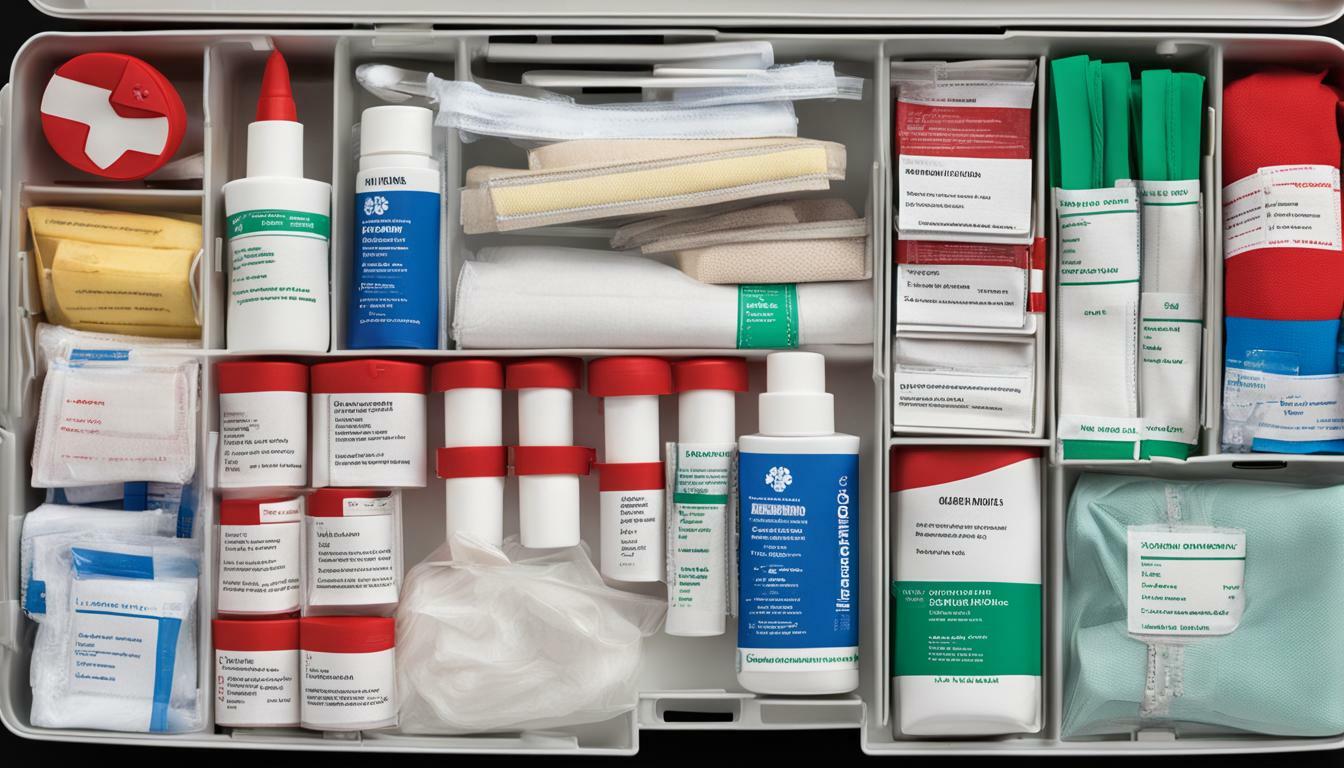
Stocking and Expiry Date Management
Properly maintaining the contents of your first aid kit is essential to ensure readiness during emergencies. It is crucial to check the stock of your supplies regularly to avoid running out of essential items. Keeping a well-stocked first aid kit is the key to being prepared for any accidents or injuries that may happen.
Here are some tips to help manage the stock and expiry dates of your first aid supplies:
| Tip | Description |
|---|---|
| 1. | Check the contents of your first aid kit regularly. Make a list of items that need to be replaced or replenished and purchase them promptly. You may consider setting a reminder to check the kit every few months. |
| 2. | Inspect the expiry dates of your supplies. First aid items, such as medications and ointments, have a limited shelf life and may lose their effectiveness over time. Dispose of any expired items and replace them with new ones to ensure the efficacy of your kit. |
| 3. | Store your supplies in a cool, dry place, away from direct sunlight and moisture. Extreme temperatures or humidity can affect the integrity of some first aid items and reduce their shelf life. |
By following these tips, you can ensure that your first aid kit is well-stocked, up-to-date, and ready to use in case of an emergency. Don’t forget to check the contents regularly and update them as needed to maintain the effectiveness of your first aid kit.
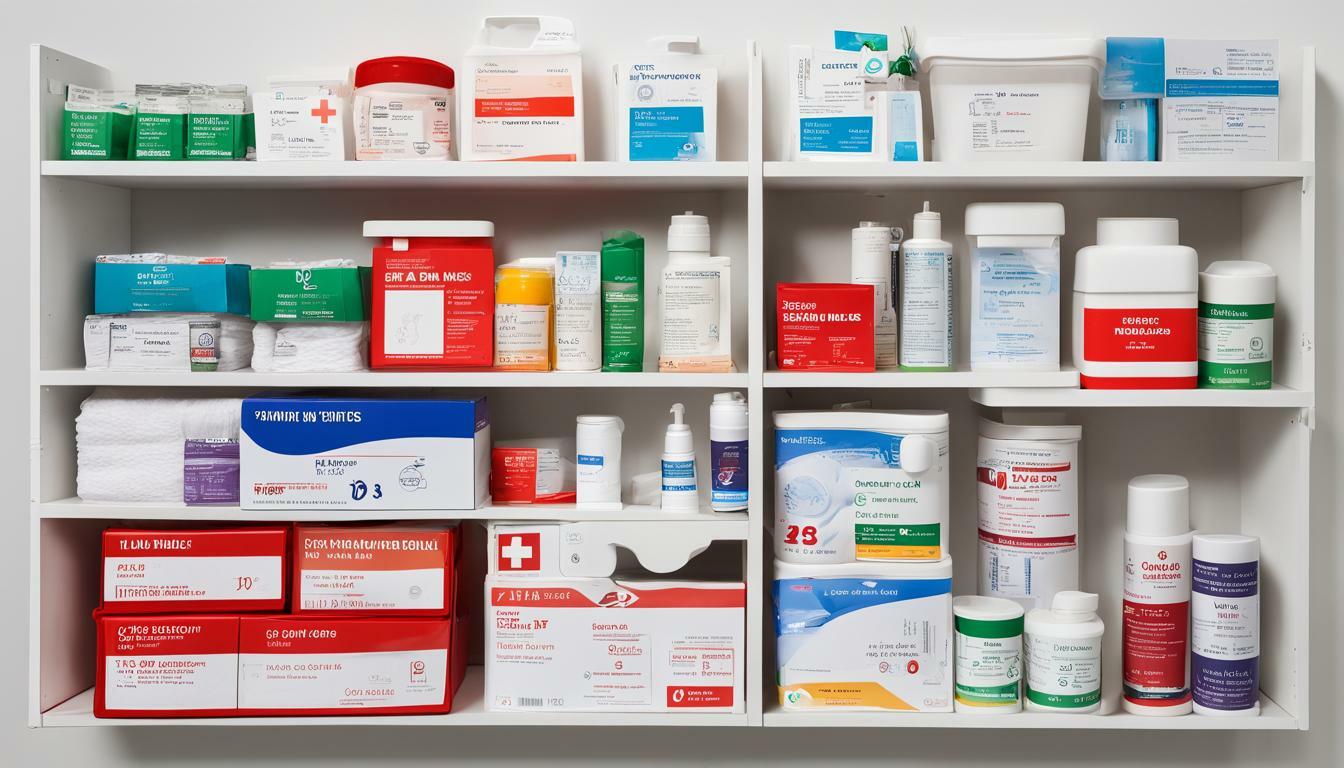
Maintaining a First Aid Kit Checklist
Creating and regularly updating a first aid kit checklist is vital to ensure that your kit is always well-stocked and ready for use. A checklist helps you keep track of the supplies you have and those that need replenishing. It also enables you to identify any missing items and add them to your list.
Your first aid kit checklist should include all the essential medical supplies that need frequent substitution, such as bandages, antiseptics, and medications. Remember to check the expiry dates of the items and replace them when they are no longer viable.
A well-maintained first aid kit checklist should be easily accessible and stored in a secure location. It is also essential to ensure that everyone who might use the kit knows where the checklist is stored.

Regularly updating your first aid kit checklist ensures that your kit remains relevant and up-to-date, ensuring its overall effectiveness. We recommend reviewing your checklist every couple of months or as needed based on any changes in your circumstances or needs.
In summary, maintaining a first aid kit checklist is an essential aspect of first aid kit maintenance. By regularly checking and updating your list, you can ensure that your kit is always well-stocked and ready for emergencies.
Training and Education
Storing your first aid kit safely is only half the battle. Having the knowledge and skills to use the items in the kit appropriately is equally important. First aid training and education contribute to the overall effectiveness of your first aid kit and ensure that you can provide timely and appropriate care during emergencies.
Look for certified first aid courses in your area, and enroll yourself and your family or colleagues. These courses cover a wide range of topics, including basic first aid techniques, CPR, and using an automated external defibrillator (AED). They also provide hands-on training and practice scenarios to help you feel more confident in responding to emergencies.
Aside from formal training, regularly refreshing your knowledge of first aid techniques and procedures is essential. Reading up on the latest medical advancements and procedures can also help you stay up-to-date with the most effective first aid practices.
Finally, ensure that everyone in your household or workplace is aware of the location of the first aid kit and basic first aid practices. This can help facilitate a prompt response during emergencies, and ensure that the first aid kit is retrieved and used appropriately.
First Aid Kit Storage Tips
- Store your first aid kit in a cool, dry place away from direct sunlight and heat sources.
- Ensure that the kit is easily accessible and located in a central area.
- Regularly check the expiry dates of the items in the kit and replace any expired or damaged items immediately.
- Develop an inventory checklist and keep track of the supplies in the kit and those that need replenishing.
- Categorize and label your supplies to simplify the retrieval process during emergencies.
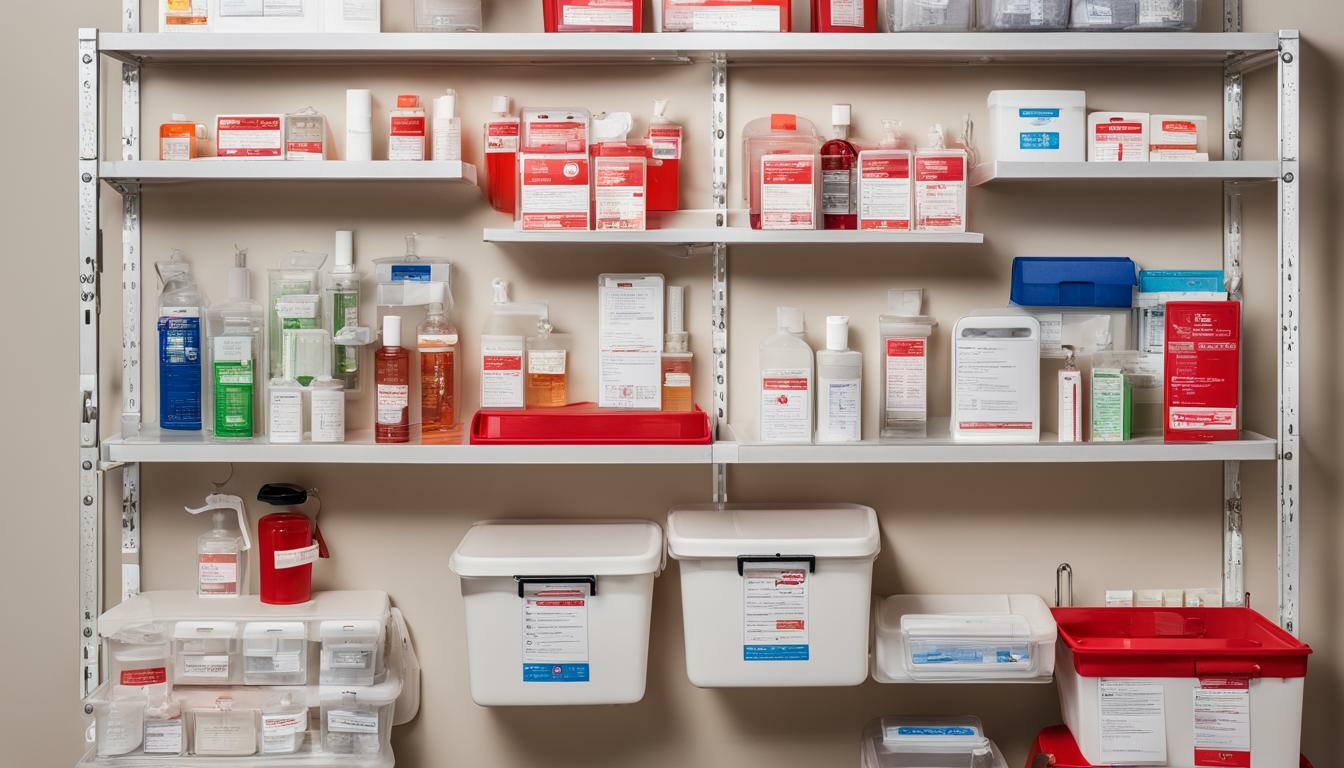
Regular Auditing and Reevaluation
Regular auditing and reevaluation of your first aid kit are essential to ensure that the supplies are up-to-date, relevant, and in good condition. It is recommended to conduct an audit at least once every six months to check the stock levels and expiry dates of your first aid supplies. However, if your kit is used frequently, it is best to check it more often.
During an audit, check each item in your first aid kit and verify that it is in good condition, unexpired, and appropriate for your specific needs. If any item has expired or is damaged, replace it immediately. Also, check the quantity of each item to ensure that you have enough supplies in case of an emergency.
Reevaluation of your first aid kit contents should be conducted periodically to assess whether your current kit meets your needs. Factors such as changes in your health condition, lifestyle, or work environment may affect the relevance of your first aid supplies. Reevaluate your first aid kit contents, considering any new needs or circumstances that have emerged since the last review.
Regular auditing and reevaluation of your first aid kit are essential to maintaining a well-stocked and effective kit. By conducting audits and reevaluations, you can identify and address any issues quickly and ensure that your first aid kit is always ready for use during emergencies.
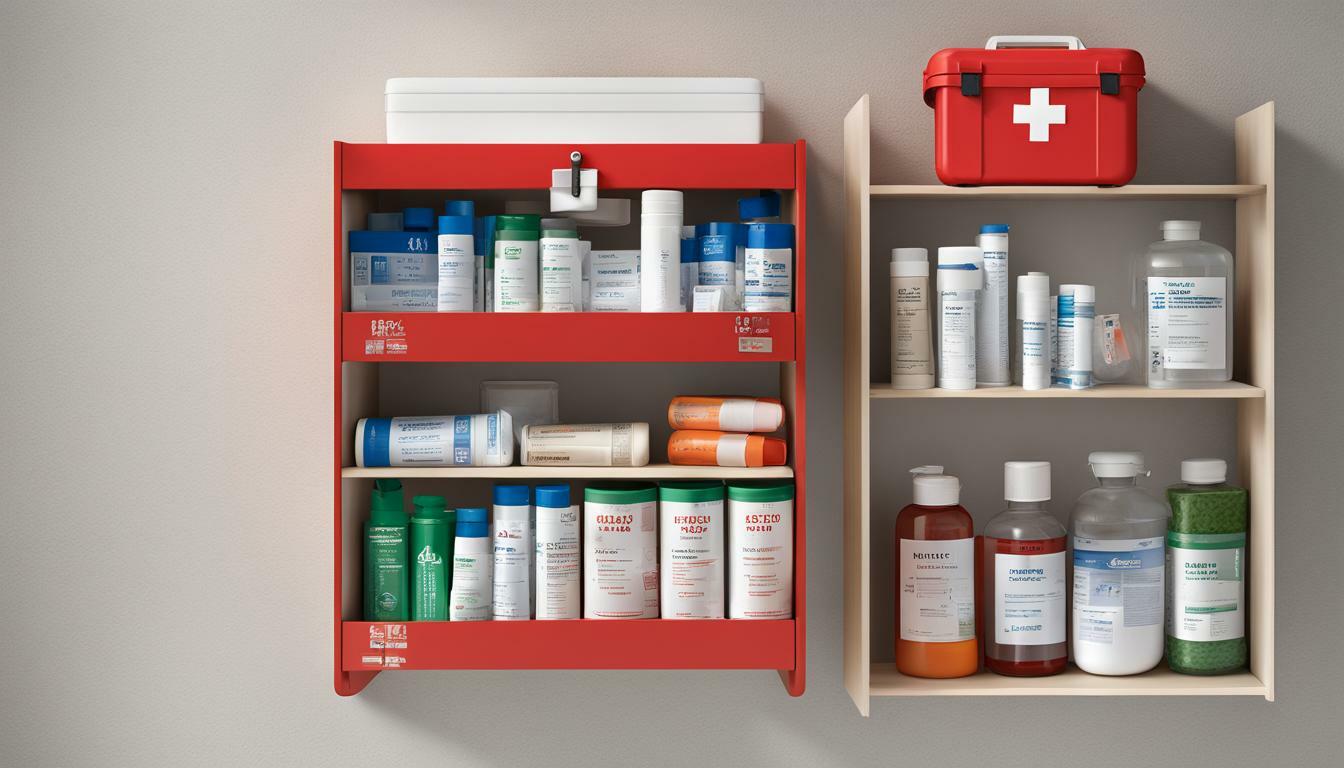
Conclusion
In conclusion, storing your first aid kit safely is essential for emergency preparedness. By following the tips and guidelines outlined in this guide, you can ensure that your first aid supplies are easily accessible, well-organized, and ready for use when needed. Remember to regularly check and maintain your kit to guarantee its effectiveness and readiness.
Keeping your first aid supplies organized and up-to-date can make all the difference in a medical emergency. From selecting the right container to categorizing and labeling your supplies, every step in the process plays an essential role in ensuring your kit is easily accessible and ready to use.
Stay Prepared
Don’t wait until an emergency happens to start organizing and maintaining your first aid kit. Instead, take action now to ensure that you have the necessary supplies and knowledge to respond quickly and effectively in a medical emergency. By regularly auditing and reevaluating your kit, you can make necessary adjustments to meet your evolving needs and circumstances. Remember, the key to staying safe is being prepared.
